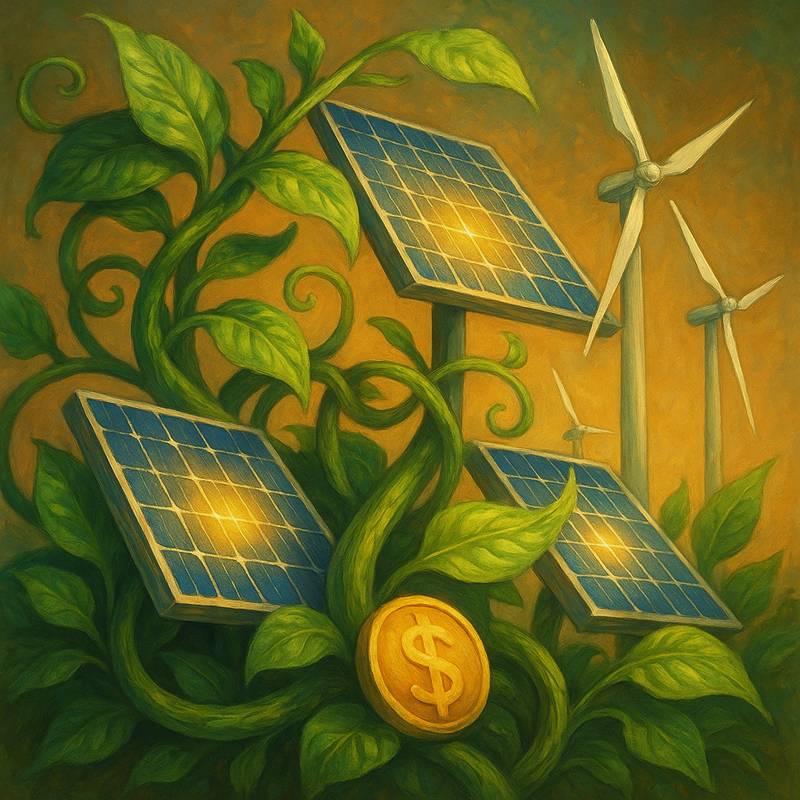Investments in renewable energy in the US: why 2025 could be the year of green funds
Investments in renewable energy are no longer a niche topic reserved for environmentally conscious investors; they have become a major financial strategy with growing global attention. In the United States, the combination of government incentives, technological breakthroughs, and rising consumer demand for sustainable practices sets the stage for a significant shift.
The momentum behind this trend is supported by policies such as the Inflation Reduction Act, which channels billions into clean technology development and infrastructure. Additionally, global institutions like the International Energy Agency (IEA) consistently project robust growth for solar, wind, and other low-carbon sectors. With favorable economic conditions and political will aligned, the upcoming year may mark the beginning of a new era in green finance.
Green funds gaining strength

One of the clearest signals of change is the rise of green funds specifically designed to allocate capital into environmentally sustainable companies. These vehicles not only appeal to ethical investors but also to those seeking long-term stability, as renewable sectors become less volatile than fossil fuels. According to BloombergNEF, renewable capacity is expected to outpace traditional energy sources within this decade, boosting the appeal of funds dedicated to this transformation.
Institutional players such as pension funds and university endowments have begun to diversify heavily into climate-focused portfolios. This institutional support ensures that capital inflows will not be short-lived, but rather part of a structural market shift. For retail investors, the availability of exchange-traded funds (ETFs) centered on sustainability means that accessing this market no longer requires specialized knowledge or large sums of money.
Drivers of investor confidence
Confidence in green assets is largely fueled by declining costs of renewable technologies. Solar panels and wind turbines have become cheaper and more efficient, making them increasingly competitive with coal and natural gas. This economic advantage, combined with heightened awareness of climate risks, encourages both governments and corporations to commit to cleaner energy targets. Reports from U.S. Department of Energy show that federal and state-level programs are accelerating this transition.
Opportunities and challenges ahead
While the outlook appears promising, challenges remain for investors considering green funds. The renewable sector, though increasingly competitive, still depends on supply chains that can be vulnerable to geopolitical tensions. Battery storage and rare earth materials, essential for solar and wind expansion, often face price volatility. These risks highlight the importance of diversification when building sustainable portfolios.
Yet, despite these obstacles, opportunities abound. Governments are allocating unprecedented subsidies, and private companies are partnering to accelerate research in energy storage and hydrogen technologies. This creates fertile ground for early investors willing to balance short-term risks with long-term rewards. According to World Bank, the renewable sector is also expected to play a central role in job creation, adding social impact to financial returns.
The role of innovation
Innovation will define how fast the clean energy industry matures. From next-generation solar cells to advanced offshore wind platforms, the technology pipeline is expanding. Breakthroughs in grid modernization and digital energy management also ensure that renewables can scale without compromising reliability. As these technologies evolve, they lower barriers for investors, making sustainable funds more attractive and accessible.
A pivotal year for sustainable finance
Looking at the trajectory of global markets, 2025 is shaping up as a pivotal year for sustainable finance. With investments in renewable energy at the center of this shift, green funds may soon transition from being an alternative option to a mainstream necessity in diversified portfolios. This turning point highlights not only financial potential but also the growing role of capital markets in driving a low-carbon future.
The convergence of policy, consumer demand, and technological progress presents a rare alignment that could reshape financial strategies for decades. Investors who embrace this moment may not only secure competitive returns but also contribute to the broader transition toward a low-carbon future. This is more than just a financial opportunity; it is participation in a worldwide transformation.















